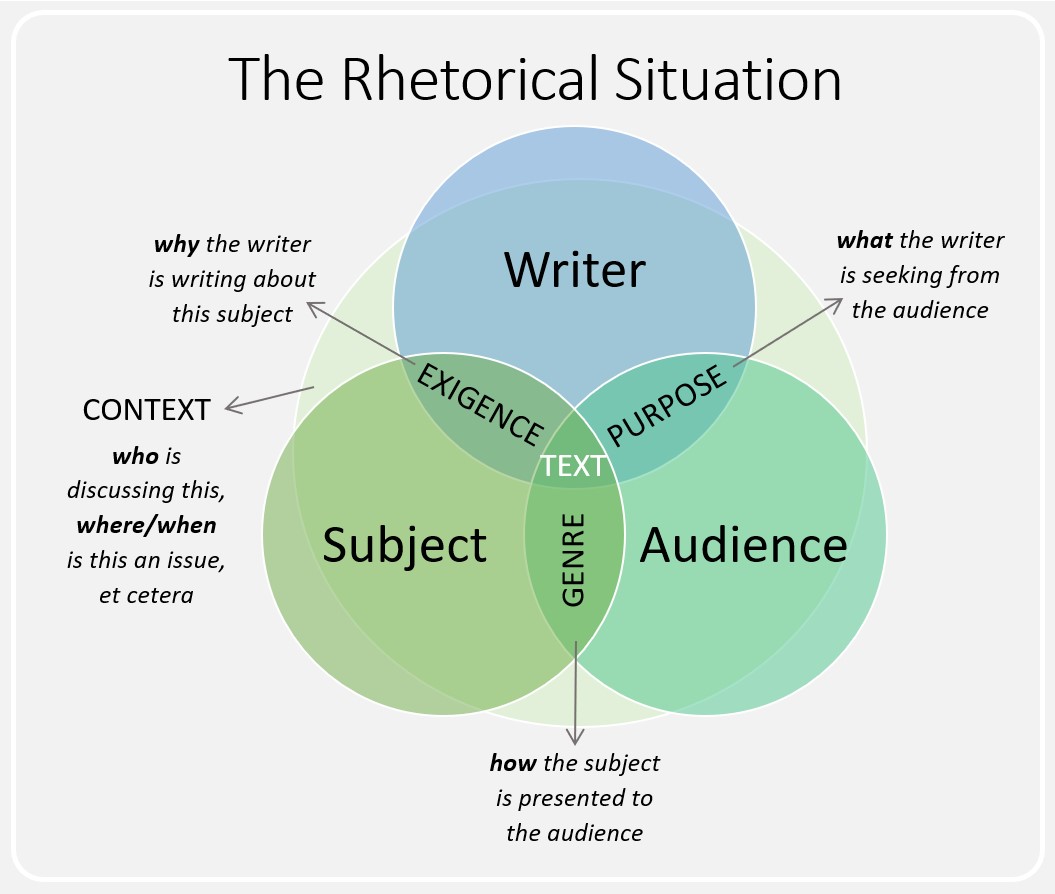ENGL 250 Teaching Tip: Rhetorical Analysis
Author: lskramer
Author: lskramer
Ryan Everett, RPC Ph.D. student, pushes his students to consider the rhetorical situation with every module in ENGL 250, but for many students, it is the Rhetorical Analysis module where it really clicks. Regardless of the selected medium for this assignment, instructors can encourage students to think about the elements of the rhetorical situation, not only for this module but for their daily lives. Developing insight into why a text exists, what it aims to do and how it will help students understand that writing is highly situated and responsive will help them produce more meaningful texts and become better communicators overall.
ENGL 250 instructors can help their students get practice thinking about and discussing the elements of the rhetorical situation three times over the course of the RA module in the way that Ryan suggests:
They can do these exercises shorthand with either the 3-part Venn diagram or a text breakdown like this:
Writer/Speaker/Artist:
Subject:
Intended Audience:
Genre:
Exigence:
Purpose:
Context (to whom, where, when, and why this applies):